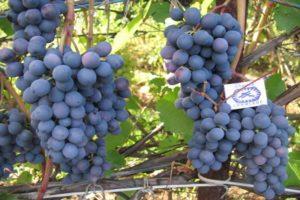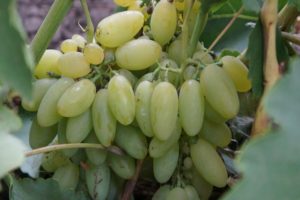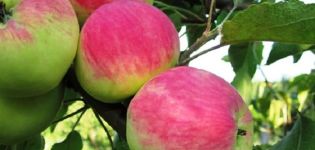Description and subtleties of growing Monastrell grapes
The taste of grape berries is familiar to everyone from childhood. They are used for different purposes - table varieties are eaten, and technical ones are used for processing. The Monastrell grape variety is one of the most famous technical varieties of Spanish origin. Its history has been going on for two and a half thousand years. During this time, it spread throughout the world and became the basis for a tart red wine, the taste of which largely depends on the place where the berries were picked.
Description and characteristics of the variety
Monastrell, or Mourvèdre, is a late-ripening red grape. It has strong bushes that give good growth of shoots that can ripen completely.
The leaves of the variety are three-lobed, with a weak dissection, pubescence on the back. The plant has bisexual flowers. The berries are small, round, dark purple, with a strong waxy bloom. Their flesh is very juicy, the skin is tough. Bunches of grapes are dense, conical, medium in size. The technical variety Monastrell ripens within 150 days after the start of bud movement.
Pros and cons of Monastrell grapes
This variety has long been known to gardeners. Among its advantages, they note:
- high productivity;
- drought resistance;
- unpretentiousness;
- high quality of the resulting wine;
- undemanding to soils.
There are not so many disadvantages of the variety:
- weakly resistant to fungal diseases;
- slow development in cool, humid climates.
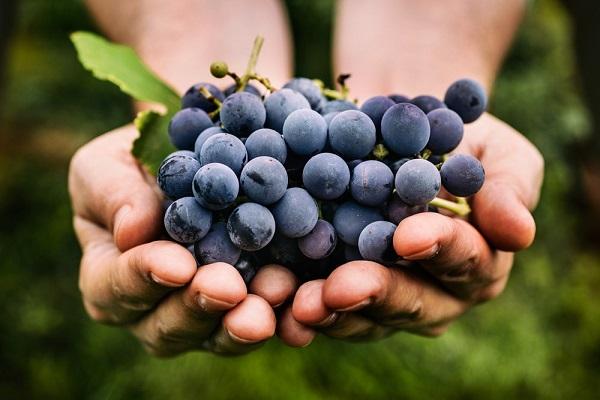
The nuances of growing a crop
It is possible to get a good bush of grapes, and in the future, and the harvest of berries, only if agricultural technology is observed, the timely planting of seedlings.
When to plant
Each gardener decides for himself when to plant grapes - in spring or autumn.
In spring, the soil is moist, saturated with useful elements. The seedling quickly takes root, begins its growth and development.
The disadvantages of spring planting include the likelihood of damage to the seedling by pests, late frosts.
Planting in the fall should be done well in advance so that the plant has time to take root. For the winter, it should be covered securely so that freezing does not occur.
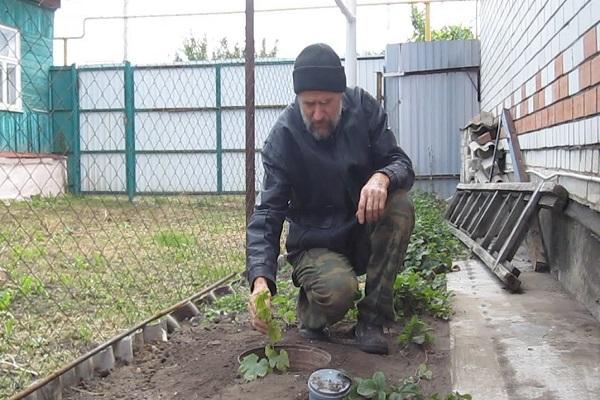
Preparation of planting material and planting sites
To prepare the soil for planting, they dig trenches or holes into which a soil mixture is poured, consisting of garden soil, humus, ash and sand. For spring planting, they are prepared in the fall, for autumn planting - in the summer, for a month and a half.
Before planting, the cuttings are soaked in water, treated with a growth stimulant and planted, leaving two buds on the surface. They are covered with plastic bottles, creating their own microclimate. The seedling will be ready for planting in a permanent place next season.
Overwintered cuttings already have roots and developing leaves. After hardening in a school, they are transferred to a permanent place.
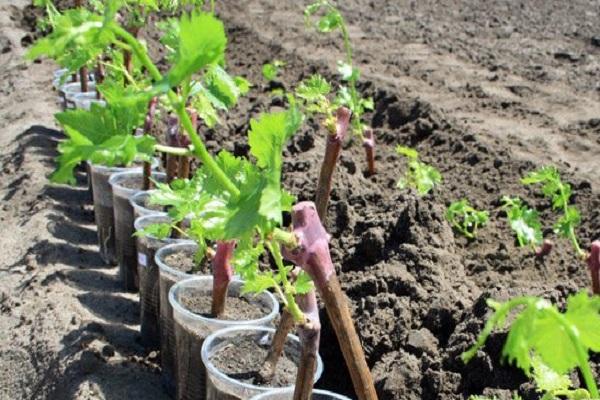
Landing in the ground
To plant a seedling in a permanent place, it is placed in a prepared hole along with a lump of earth so that the neck is at ground level or somewhat lower.
The grapes are watered abundantly, slightly shaded from direct sunlight and the soil around the plant is mulched.
Subtleties of caring for grapes
The Monastrell variety is unpretentious. The plant is capable of developing independently. But with proper care, the yield increases significantly, the quality of the berries improves. The type of activities depends on which phase the grapes are in.
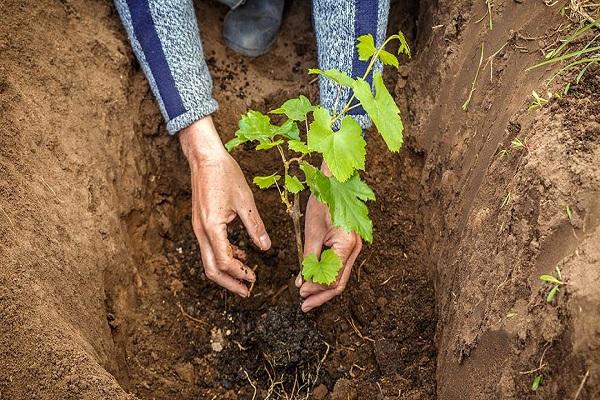
Watering features
Monastrell grapes are unpretentious, easily tolerate heat and drought. Watering is carried out as needed, taking into account the atmospheric precipitation.
In the first year after planting the seedling, it is watered once a week, during the heat it is moistened daily. Water consumption - 5 buckets for an adult bush.
Experts do not recommend watering the grapes during flowering and stop it two weeks before the berries are fully ripe. To ripen the vines and increase the winter hardiness of the bushes, the last abundant watering is carried out in late autumn, as soon as the foliage falls.
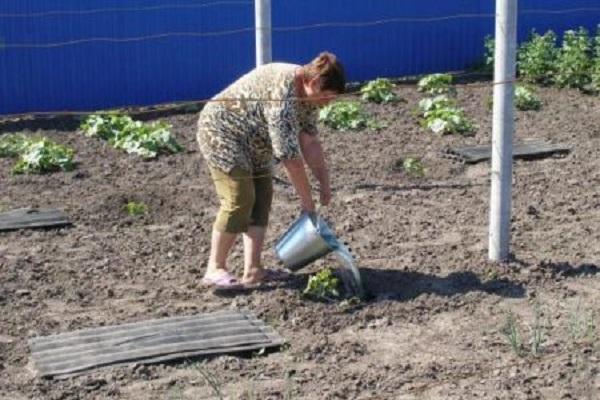
Fertilizers and feeding
The first top dressing is applied under the grapes at the time of planting. After this 2-3 years, the vine does not need fertilization.
Adult bushes are fed with organics and minerals. In the spring, liquid fertilizers are better absorbed, in the fall - in the form of granules or powder. During the season, the plant is fed several times:
- two weeks before flowering - superphosphate, potassium salt, urea;
- during the formation of berries - potassium salt, superphosphate;
- during the ripening period of berries - phosphorus fertilizers;
- after harvesting - with nitrogen in the form of organic matter and mineral fertilizers.
Top-dressing carried out on time, root and foliar, provide plants with nutrients, contribute to a successful winter.
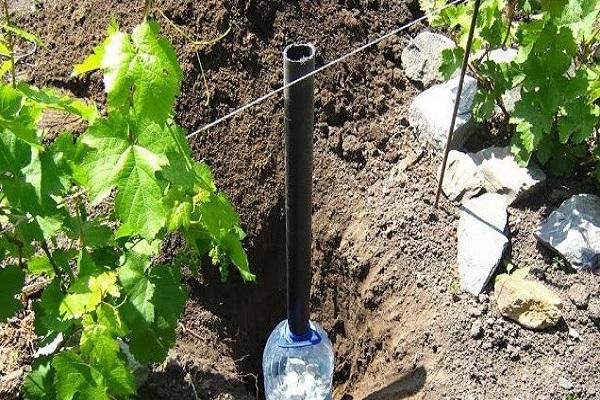
Pruning grapes
The Monastrell grape is a covering grape, so it is pruned twice a year. The first time - in the fall, before the onset of cold weather, in front of a shelter, on a ripe vine.
In the spring, before the buds open, pruning is carried out, having previously determined which buds remained intact. During this period, it is worth removing weak, damaged, non-fruiting and fattening shoots.
Usually, on technical late varieties, when pruning, 2 to 14 eyes are left.
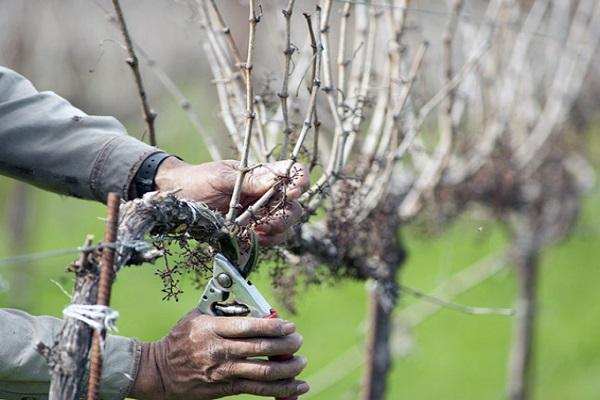
Wintering
Do not rush to shelter Monastrell grapes for the winter. With a gradual decrease in temperature, the bushes are hardened before wintering and are not afraid of temporary cold snaps.
Complete shelter should be completed by the end of the leaf fall, when frosts come down to -10 ⁰С. The vine is covered by sprinkling it with earth and pinning the shoots, placing them in shallow ditches. Trenches should be located on both sides to drain the spring melt water. For protection, use boxes, slate, boards, spruce branches, covering material.
The quality of wintering of Monastrell grapes is influenced by the timeliness of the harvest and the quality of the autumn watering.
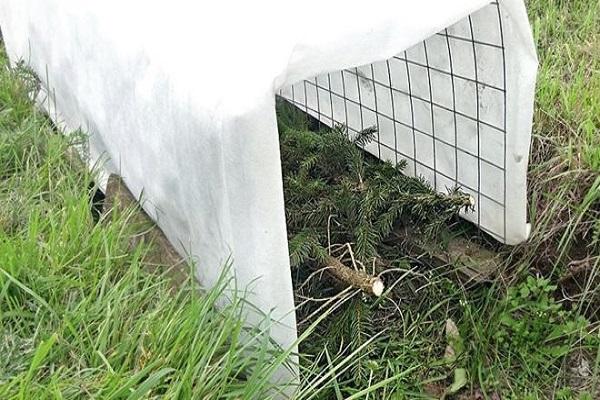
How to protect a crop from diseases and pests
The Monastrel variety is not resistant to fungal diseases. It should be treated with fungicides at all stages of development:
- during the removal of the winter shelter;
- at the beginning of bud break;
- a week before flowering;
- a month before harvesting;
- after pruning, before wintering.
You should use the drugs strictly according to the instructions.
The main pests of the Monastrel variety include:
- grape aphid;
- leaf roll;
- felt mite;
- crunchy.
The proven and reliable means include broad-spectrum insecticides.
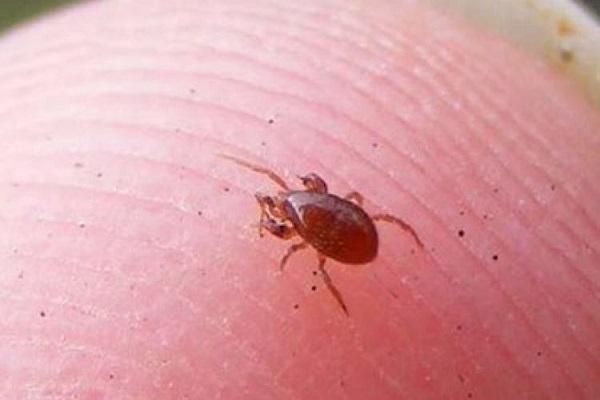
Harvesting and storage
Harvesting of Monastrell grapes begins in August-September. Each brush weighs an average of 700 g. Berries are used to make wine in combination with other varieties, since Monastrell has a too rich taste.
